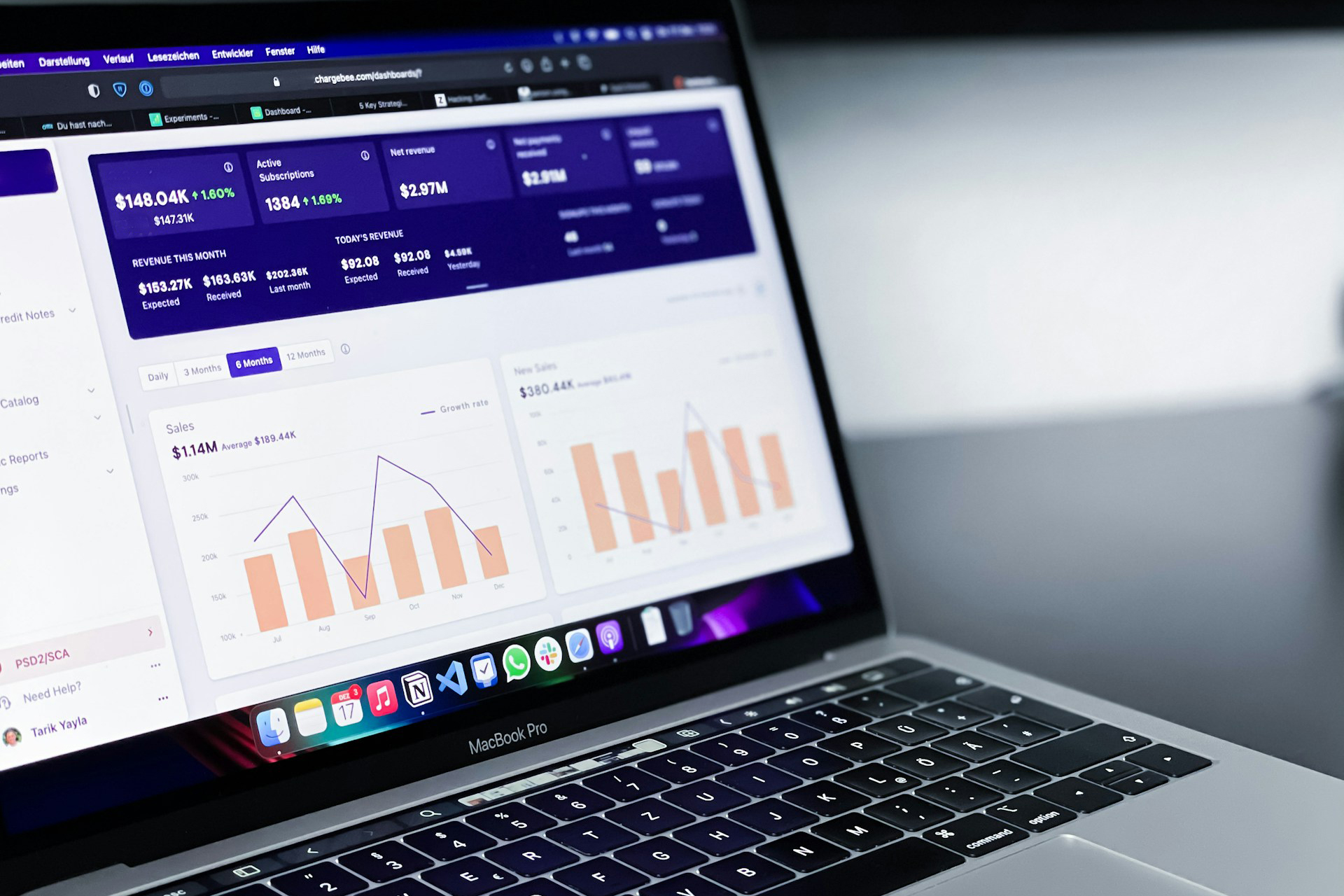The cost-benefit analysis is one of a digital agency's strongest tools in its arsenal. You can quickly assess your projects and decisions using available data and analytical tools to interpret risk and return better. You can also more promptly examine how many resources a project may require.
Give your agency a competitive advantage by learning how to do a cost-benefit analysis. In addition, it might help to see a cost-benefit analysis example to help you better understand how to apply it in your workplace.
What is cost-benefit analysis, and what is its relevance in business growth?
On the surface, cost-benefit analysis is relatively straightforward. You examine the potential costs — expenses, fees, ongoing payments, etc. — against benefits like income and subscription revenue to inform your agency’s decisions. You can also use this analysis to help you make hiring decisions, train employees, or enter a new market or geographical region.
Effective business leaders apply this analysis regularly and thoroughly, pulling data to support many decisions. Without using cost-benefit analysis, you can stall your brand’s growth or make risky financial decisions that aren’t likely to pay off.
How to conduct a cost-benefit analysis for business growth
Once you understand more about the cost-benefit principle, you can apply a cost-benefit analysis process throughout your brand. This process requires a few steps, from identifying strategies to comparing costs and benefits.
Identify potential growth strategies
Whether you’re considering tapping into a new market, launching a subscription service, or hiring a specialist to handle your digital marketing efforts, take the time to identify your potential growth strategies. These growth items can be as big or as small as you want, but they should have some tangible impact on your business.
Outline potential costs and benefits associated with the growth initiative
Take a look at how much your new initiative may cost. Does your brand have the resources to support a new application as it latches on? Can you take a hit on the first year of a project running negative? On the other hand, ask yourself what you could stand to gain. A tough first year could lead to a boom in the second. Perhaps a specialist’s higher salary starts paying for itself through increased leads.
Assign a monetary value to these costs & benefits
This step is where it’s time to budget. Assign a value to each cost and benefit on your list, and try to be reasonable and unbiased. You may think a new initiative will immediately take off, but it’s better to err on the side of caution sometimes.
Compare the aggregated costs & benefits
Once you have a value for the items in your analysis, you can compare them to see where your project or initiative lines up.
Make decisions based on the results
You're ready to make some decisions at the end of your cost-benefit analysis. Sometimes, your research shows that a new initiative could be lucrative for your brand if you market it aggressively and handle the increased spending. Other times, the data will suggest a new market won’t be a significant success, and you should scale back expectations. While your cost-benefit report may not be the only factor in your decision-making process, it should be a big one.
Incorporating the opportunity cost in the cost-benefit analysis
The concept of opportunity cost represents the potential benefits a business may miss out on when choosing one alternative outcome over another. By incorporating the opportunity cost in the cost-benefit analysis, companies can have a comprehensive understanding of both the tangible and intangible costs associated with their expansion strategies.
Imagine a scenario of a business having two potential growth paths, expanding to a new geographical market or investing in product development for the existing market. Which path is the most cost-effective for their case?
When estimating the costs associated with the potential geographic expansion, the company should consider not only the direct expenses such as shipping, tariffs, or new offices but also the indirect cost of missing the chance to improve their existing products increasing their client loyalty and consequently their revenue.
To calculate the opportunity cost of your business strategies, you just have to follow the following formula:
Opportunity cost = Cost of alternative outcome - cost of chosen outcome
Using the appropriate tools to facilitate a cost-benefit analysis
The easiest way to conduct a cost-benefit analysis is to use the right technology. However, agency leaders often need help knowing where to start with so many options available. Ask a handful of professionals what tools they prefer, and you’ll likely get a few common responses, including traditional spreadsheets and BI software.
Microsoft Excel or Google Sheets
You can use your existing CBA template or find one online for either spreadsheet tool. Using Excel or Sheets, you can calculate costs, benefits, and returns over time while factoring in discount rates and possible taxation. It’s highly recommended to collaborate with your finance team on this spreadsheet, making sure that you have added all the critical information needed.
Project Management Software
Using project management software, you can more closely monitor new initiatives and projects while spotting workflow deficiencies. Project management software also helps you to manage team members more effectively.
Time-Tracking Software
Time-tracking software like Elorus allows businesses to measure employees' work time more accurately on different projects. You can use this data to calculate labor costs, which is a critical cost-benefit analysis component, or the time needed to launch a new service that’s similar to your existing offerings. You can assume a roughly comparable amount of resources will be necessary for the new project too.
The time-tracking tool might not be as relevant if your new service is a major departure from your current services, but it can still help you frame your expectations.
Business Intelligence and Analytics Software
Business intelligence tools can help you analyze and interpret cost-benefit reports. Visualization makes it easier to communicate your findings and helps employees understand the data’s implications.
If you use software tools to enhance your analysis, you should remember that they are not a substitute for sound judgment and strategic thinking. Also, you must ensure employees are appropriately trained in those tools. Then, you can integrate the data you collect into your business processes. Without sufficient training on each platform, you’ll risk inaccurate data skewing your cost-benefit analysis.
Simple Time Tracking Solution for your Agency
Cost-benefit analysis example
Talking about the perks of cost-benefit analysis can be helpful, but it’s easier to understand when you can see them for yourself. The following example shows what it might look like if a digital agency launches a new subscription service.
Keep in mind that this is a simplified cost-benefit analysis example. A software-backed analysis may factor in other real-world situations, like varying discount rates, taxation, fluctuating revenue, etc.
| Year 1 | Year 2 | Year 3 | Year 4 | Year 5 | Total | |
| Software Development | $200,000 | 0 | 0 | 0 | 0 | $200,000 |
| Marketing & Launch | $100,000 | 0 | 0 | 0 | 0 | $100,000 |
| Customer Service | $20,000 | $25,000 | $30,000 | $40,000 | $50,000 | $165,000 |
| Server & Maintenance | $20,000 | $30,000 | $40,000 | $50,000 | $60,000 | $200,000 |
| Other Operational Costs | $10,000 | $20,000 | $30,000 | $60,000 | $90,000 | $210,000 |
| Total Cost | $350,000 | $75,000 | $100,000 | $150,000 | $200,000 | $875,000 |
| Revenue | $100,000 | $250,000 | $400,000 | $600,000 | $800,000 | $2,150,000 |
| Net Benefit | $-250,000 | $175,000 | $300,000 | $450,000 | $600,000 | $1,275,000 |
Software development includes the costs of creating the online service. This may consist of hiring developers or paying a software development company for app creation. Ideally, this is a one-time expense, though you may need additional development for new releases, patches, or other content.
Marketing and launch cover the initial marketing spend of the new service to potential customers and the costs associated with the official launch. Since you’re only launching the service once, you only need that first initial bout of launch marketing. Further promotional activities, significant updates, and external partnerships can all impact future marketing spend, though.
Customer service covers the cost of providing support to customers. Most commonly, this will include hiring customer service staff, setting up a digital help desk, and investing in software. This figure will grow as your new service expands and you gain more clients.
Server and maintenance include the costs of hosting an online service and ensuring the servers remain up. There should also be available support for troubleshooting and fixes. Notice that these are ongoing expenses and scale alongside the business. As your audience grows, so will your server needs.
Other operational costs include your general administrative expenses, legal and accounting services costs, and additional miscellaneous fees you might encounter while developing your new service.
The example runs the total costs of each expense against the projected revenue, showing that launching the subscription service could represent a net positive for your agency. However, it also highlights that you’re likely operating the service’s first year at a deficit, meaning you need to be prepared to financially support your subscription service in its early days.
To sum up
Cost-benefit analysis can inform your digital agency about much more than just its bottom line. The information you get from a well-thought-out cost-benefit analysis can help you identify inefficiencies and opportunities for growth. While by using the right resources, you can generate a reliable cost-benefit report that allows you to accurately map out your digital agency’s future.






